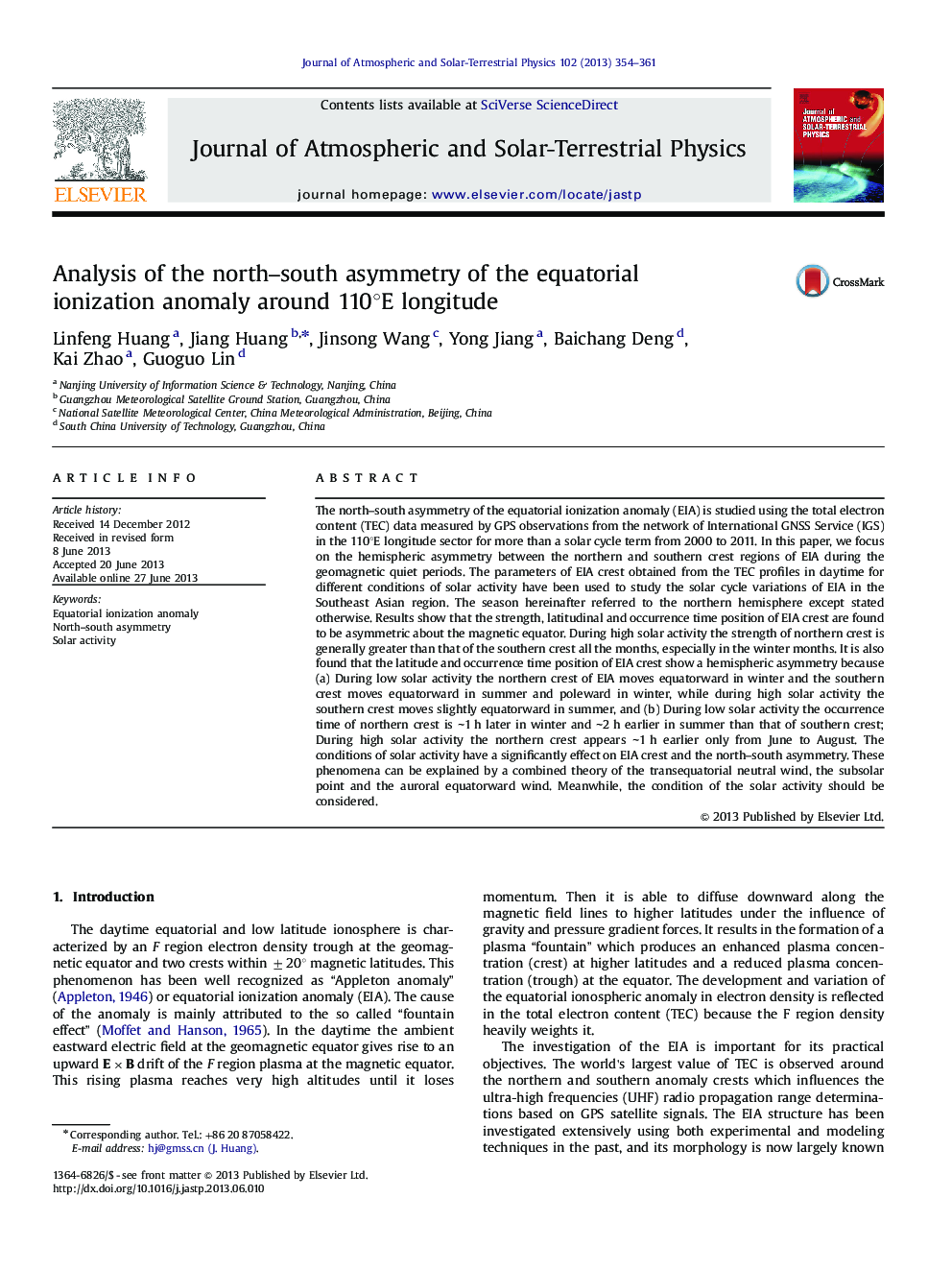| کد مقاله | کد نشریه | سال انتشار | مقاله انگلیسی | نسخه تمام متن |
|---|---|---|---|---|
| 8140698 | 1523635 | 2013 | 8 صفحه PDF | دانلود رایگان |
عنوان انگلیسی مقاله ISI
Analysis of the north-south asymmetry of the equatorial ionization anomaly around 110°E longitude
دانلود مقاله + سفارش ترجمه
دانلود مقاله ISI انگلیسی
رایگان برای ایرانیان
کلمات کلیدی
موضوعات مرتبط
مهندسی و علوم پایه
علوم زمین و سیارات
فیزیک زمین (ژئو فیزیک)
پیش نمایش صفحه اول مقاله

چکیده انگلیسی
The north-south asymmetry of the equatorial ionization anomaly (EIA) is studied using the total electron content (TEC) data measured by GPS observations from the network of International GNSS Service (IGS) in the 110°E longitude sector for more than a solar cycle term from 2000 to 2011. In this paper, we focus on the hemispheric asymmetry between the northern and southern crest regions of EIA during the geomagnetic quiet periods. The parameters of EIA crest obtained from the TEC profiles in daytime for different conditions of solar activity have been used to study the solar cycle variations of EIA in the Southeast Asian region. The season hereinafter referred to the northern hemisphere except stated otherwise. Results show that the strength, latitudinal and occurrence time position of EIA crest are found to be asymmetric about the magnetic equator. During high solar activity the strength of northern crest is generally greater than that of the southern crest all the months, especially in the winter months. It is also found that the latitude and occurrence time position of EIA crest show a hemispheric asymmetry because (a) During low solar activity the northern crest of EIA moves equatorward in winter and the southern crest moves equatorward in summer and poleward in winter, while during high solar activity the southern crest moves slightly equatorward in summer, and (b) During low solar activity the occurrence time of northern crest is â¼1 h later in winter and â¼2 h earlier in summer than that of southern crest; During high solar activity the northern crest appears â¼1 h earlier only from June to August. The conditions of solar activity have a significantly effect on EIA crest and the north-south asymmetry. These phenomena can be explained by a combined theory of the transequatorial neutral wind, the subsolar point and the auroral equatorward wind. Meanwhile, the condition of the solar activity should be considered.
ناشر
Database: Elsevier - ScienceDirect (ساینس دایرکت)
Journal: Journal of Atmospheric and Solar-Terrestrial Physics - Volume 102, September 2013, Pages 354-361
Journal: Journal of Atmospheric and Solar-Terrestrial Physics - Volume 102, September 2013, Pages 354-361
نویسندگان
Linfeng Huang, Jiang Huang, Jinsong Wang, Yong Jiang, Baichang Deng, Kai Zhao, Guoguo Lin,